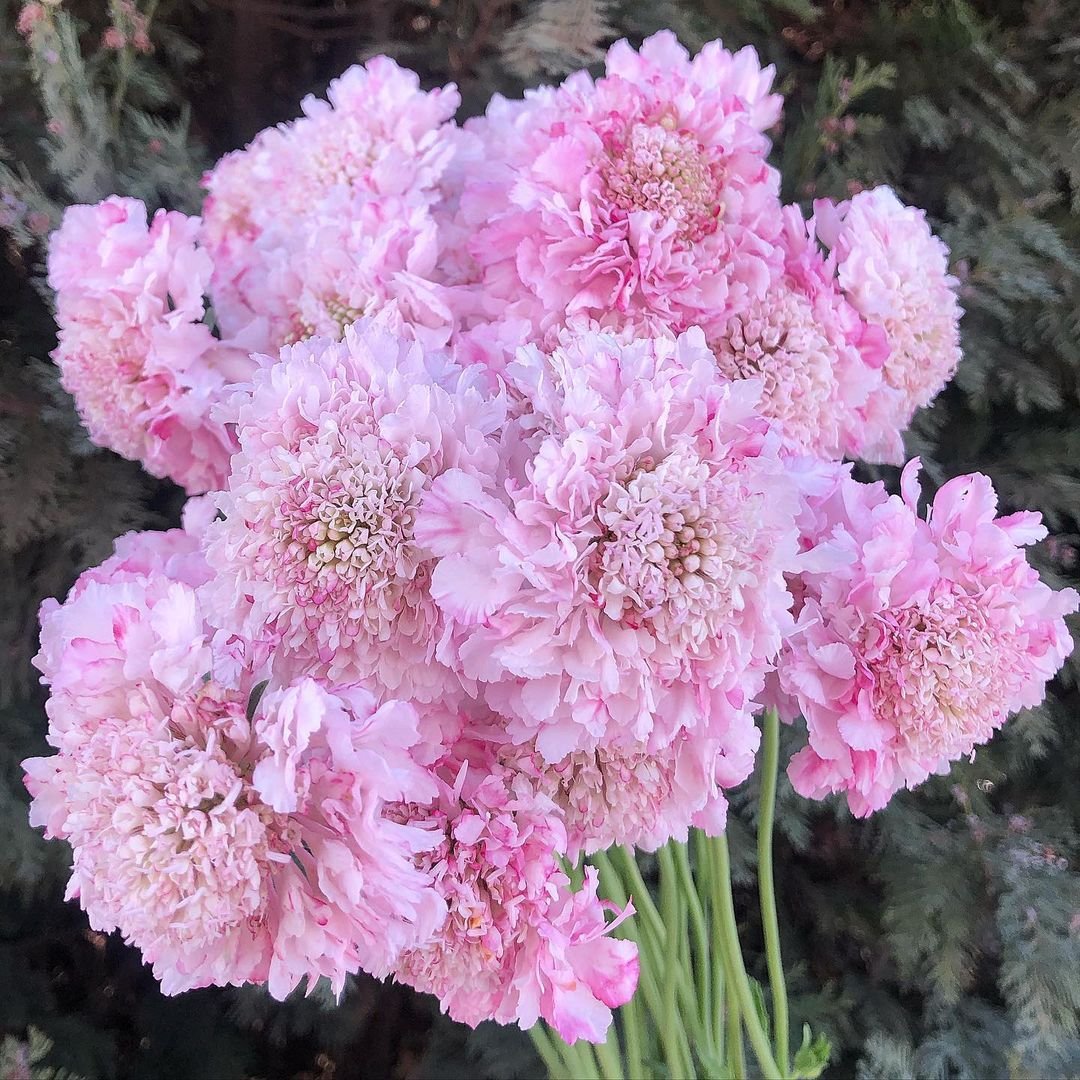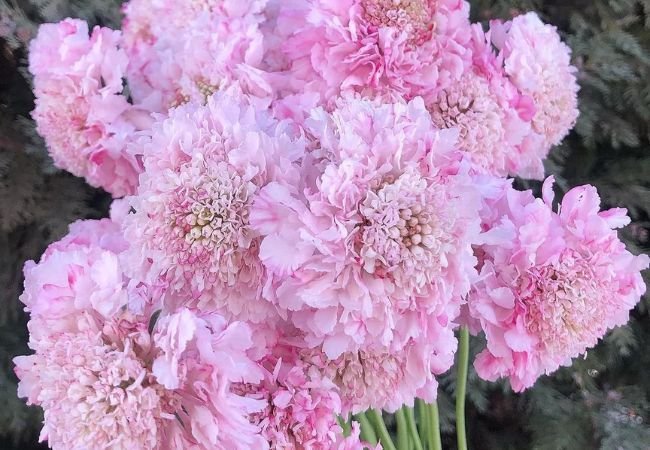Discover how to grow vibrant pincushion flowers (Scabiosa japonica) with expert tips on care, propagation, and varieties. Perfect for gardens, pots, and pollinators!
Hi there! I’m Ashley Scott, a gardener with over a decade of experience nurturing blooms from delicate perennials to bold annuals. Today, I’m diving into one of my favorite plants: the pincushion flower (Scabiosa), especially the enchanting Scabiosa japonica. Whether you’re a seasoned gardener or just starting, this guide will answer all your questions—from planting to pest control—while aligning with modern AI-driven search trends like featured snippets and voice search. Let’s get growing!
What Are Pincushion Flowers?

Pincushion flowers, named for their unique pin-like stamens protruding from a cushion-like center, belong to the Scabiosa genus. These plants are part of the honeysuckle family (Caprifoliaceae) and are native to regions like the Mediterranean, Africa, and East Asia . Scabiosa japonica, in particular, is a compact perennial native to Japan, growing 4–20 inches tall with violet-blue blooms that attract pollinators like butterflies and hummingbirds .
Key Features:
- Bloom Time: Late spring to first frost, peaking in summer .
- Colors: Shades of blue, lavender, pink, white, and even burgundy (e.g., ‘Black Knight’) .
- Height: 12–24 inches for most varieties, though Scabiosa japonica stays under 20 inches .
How to Grow Pincushion Flowers
1. Planting Conditions
Pincushion flowers thrive in full sun (6–8 hours daily) but appreciate afternoon shade in hot climates. They prefer well-draining soil enriched with compost or peat moss to prevent root rot .
- Soil pH: Neutral to slightly alkaline (6.0–7.5) .
- Hardiness Zones: Perennial in USDA zones 3–7; grown as annuals elsewhere .
Pro Tip: I’ve had great success growing dwarf varieties like Scabiosa japonica ‘Blue Note’ in pots using a mix of potting soil and perlite for drainage .
2. Starting from Seed or Transplants
- Seeds Indoors: Start 4–8 weeks before the last frost. Lightly cover seeds with ¼ inch of soil—they need light to germinate .
- Direct Sowing: After the last frost, space seeds 9–12 inches apart. Thin seedlings to avoid overcrowding .
- Transplants: Harden off seedlings for 7–10 days before planting outdoors .
Caring for Pincushion Flowers
3. Watering & Feeding
- Watering: Young plants need 1 inch of water weekly. Mature plants tolerate mild drought but thrive with consistent moisture .
- Fertilizer: A balanced, slow-release fertilizer applied in spring boosts blooms. Avoid high nitrogen to prevent leafy growth over flowers .
4. Deadheading & Pruning
Regular deadheading encourages continuous blooms. For a mid-summer refresh, shear plants back by one-third to promote fall flowering .
My Routine: I deadhead every weekend while sipping my morning coffee—it’s therapeutic and keeps my garden vibrant!
Popular Pincushion Flower Varieties
| Variety | Color | Height | Type |
|---|---|---|---|
| Scabiosa japonica | Violet-blue | 10–20″ | Perennial |
| ‘Butterfly Blue’ | Lavender | 12–18″ | Perennial |
| ‘Black Knight’ | Burgundy | 24–36″ | Annual |
| ‘Pink Mist’ | Soft pink | 12–18″ | Perennial |
For containers, try compact Scabiosa japonica ‘Blue Star’ or ‘Ritz Rose’ .
Common Questions Answered (FAQs)
1. Are pincushion flowers toxic to pets?
No! Scabiosa is non-toxic to cats, dogs, and humans .
2. Do they spread?
Perennial varieties like Scabiosa caucasica slowly spread via self-seeding. Divide plants every 3–4 years to control growth .
3. Can I grow them in pots?
Absolutely! Use a 12-inch container with drainage holes and well-draining soil. Dwarf varieties like Scabiosa japonica excel in pots .
4. How to propagate pincushion flowers?
- Seeds: Collect dried seed heads in fall .
- Division: Split mature plants in early spring .
5. Are they deer-resistant?
Yes! Their slightly fuzzy foliage deters deer .
Why Pincushion Flowers Deserve a Spot in Your Garden
- Pollinator Magnets: Butterflies and bees adore their nectar-rich blooms .
- Cut Flowers: Their long stems and vase life (7–10 days) make them perfect for arrangements .
- Low Maintenance: Ideal for busy gardeners or drought-prone areas .
Personal Favorite: I pair Scabiosa japonica with lavender and echinacea for a pollinator paradise that blooms all summer!
Troubleshooting Tips
- Flopping Stems: Stake taller varieties or plant in groups for support .
- Poor Blooming: Ensure full sun and avoid over-fertilizing .
- Root Rot: Improve drainage with sand or perlite .
Final Thoughts
Pincushion flowers are versatile, resilient, and downright gorgeous. Whether you’re planting Scabiosa japonica in a rock garden or experimenting with bold ‘Black Knight’ in borders, these blooms will elevate your space. For more gardening insights, explore my guides on drought-tolerant perennials and container gardening hacks.
Happy gardening! 🌸


2 thoughts on “Pincushion Flowers: A Gardener’s Guide to Growing Scabiosa Japonica”